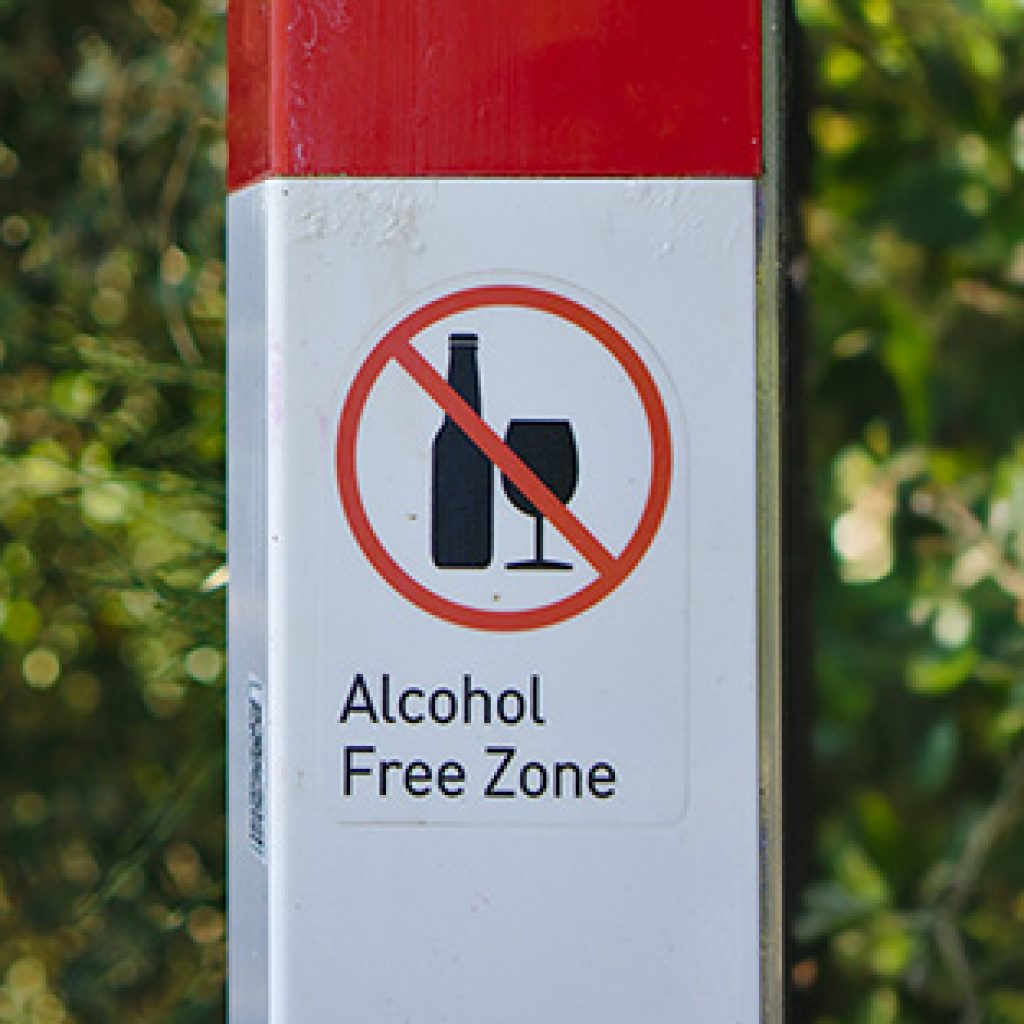Advances in the Field and Treatment Implications for Opioid Use Disorders in Sexual and Gender Minority Populations
Advances in the Field and Treatment Implications for Opioid Use Disorders in Sexual and Gender Minority Populations
A Note on Terminology
The following notation was made in the National Institutes of Health (NIH) FY 2016-2020 Strategic Plan to Advance Research on the Health and Well-Being of Sexual and Gender Minorities (SGM Strategic Plan): “The terms that individuals and groups use to refer to themselves often change or evolve over time; in contrast, a Federal agency requires uniform terminology for reports to Congress and the American people. To remain inclusive yet consistent, NIH has opted to use “Sexual and Gender Minority,” an umbrella term that encompasses lesbian, gay, bisexual, and transgender (LGBT) people, as well as those whose sexual orientation and/or gender identity varies, those who may not self-identify as LGBT (e.g., Queer, Questioning, Two-Spirit, Asexual, men who have sex with men [MSM], Gender-variant), or those who have a specific medical condition affecting reproductive development (e.g., individuals with differences or disorders of sex development (DSD), who sometimes identify as intersex)” (NIH, N.d.).
This article will use the same terminology where possible for the same reasons: to be inclusive and consistent.
Background
A report of the Institute of Medicine (IOM) entitled, The Health of Lesbian, Gay, Bisexual and Transgender People was published March 31, 2011. The National Institutes of Health (NIH) Lesbian, Gay, Bi-Sexual, and Transgender) LGBT Research Coordinating Committee (RCC) was charged with “developing and coordinating potential research and training opportunities to be undertaken at the NIH as a result of recommendations from the Institute of Medicine (IOM) report on LGBT health issues…” The IOM Report provides the first comprehensive overview of the health of LGBT populations in the United States and scientific research needs. With few exceptions, the IOM found that “data and research on LGBT populations’ health is quite limited” (NIH, N.d.).
The following is a summary of the observations and opportunities Identified by the RCC:
The analysis of the NIH research portfolio on LGBT health showed much of the portfolio at that time focused on Behavioral and Social Sciences, HIV/AIDS, Mental Health, and Substance Abuse. There was relatively little research for LGBT populations that included the impact of smoking on health, depression, suicide, cancer, aging, obesity, and alcoholism.
The portfolio analysis also brought to light several opportunities to expand the scientific knowledge base of LGBT health. A sample of the research areas where these opportunities existed were:
- “Understand and address health inequities in LGBT populations and to increase health care-seeking behaviors;
- Further develop and standardize measures of sexual orientation and gender identity to inform LGBT health; and
- Understand how health risks and protective factors interact and impact health over the life course” (NIH, N.d.).
The subsequent NIH SGM Strategic Plan “promotes and supports the advancement of basic, clinical, and behavioral and social sciences research to improve the health of people whose sexual orientations, gender identities/expressions, and/or reproductive development vary from traditional, societal, cultural, or physiological norms. In each of these areas, NIH will coordinate with NIH intramural and extramural program directors and researchers to ensure the advancement of SGM-focused research efforts.
The NIH SGM Research Coordinating Committee (RCC) anticipates that this 5 year plan, which will cover the years 2016-2020, will provide the NIH with a framework for progress in this area, and that the research that results from this plan will lay a foundation for improved health and well-being amongst a group of diverse individuals whose health needs have not traditionally received strong attention from the research community” (NIH, N.d.).
Strategic plan
At the time of the development of the NIH SGM Strategic plan, research supported SGM populations experiencing higher rates of depression, anxiety, HIV/AIDS, cardiovascular disease, diabetes, and other health risks, as well as increased risk for Substance Use Disorders (SUDs) in general (Medley, et al., 2016; NIH, N.d.). Gaps in available research included lack of research on important racial and ethnic subgroups, studies involving children, adolescents, and young adults, and studies on older Americans. As a result of those findings and identified gaps in research, the NIH SMG Strategic Plan contains the following Goals and Objectives:
Goal 1: Expand the Knowledge Base of SGM Health and Well-being Through NIH-Supported Research
- Objective 1: Encourage extramural and intramural investigators to conduct SGM research in priority areas, including those identified in the IOM report and in NIH portfolio analyses.
- Objective 2: Promote the development and implementation of appropriate measures, methods, and resources to facilitate research relevant to SGM populations.
- Objective 3: Encourage researchers to incorporate SGM-‐relevant scientific questions into extramural and intramural projects, programs, and initiatives.
Goal 2: Remove Barriers to Planning, Conducting, and Reporting NIH-Supported Research about SGM Health and Well-being
- Objective 1: Establish an NIH Sexual and Gender Minority Research office to coordinate and integrate SGM research activities across NIH, collaborate with other Federal agencies, and develop and implement a comprehensive outreach plan to engage SGM health researchers, experts, advocates, and the general public.
- Objective 2: Develop and implement activities to provide extramural and intramural researchers interested in SGM-‐relevant research topics with the skill set necessary to compete successfully for NIH funding.
- Objective 3: Increase expertise in sexual and gender minority health research within and across existing NIH review panels and study sections, as needed.
- Objective 4: Encourage cultural competency training opportunities on the specific characteristics of SGM-specific research to NIH-funded extramural and intramural clinical research trainees and researchers.
Goal 3: Strengthen the Community of Researchers and Scholars Who Conduct Research Relevant to SGM Health and Well-being
- Objective 1: Establish an NIH SGM Health Research Working Group of the NIH Council of Councils, to provide subject matter expertise and strategic perspective for extramural and intramural NIH-funded SGM health research and related efforts.
- Objective 2: Provide resources for training on and about SGM-relevant research considerations as part of the professional training opportunities and tools for extramural and intramural NIH staff.
Goal 4: Evaluate Progress on Advancing SGM Research
- Objective 1: Monitor and evaluate progress in advancing SGM health research using both qualitative and quantitative methods.
- Objective 2: In 2018, convene a panel of SGM health research experts to review NIH’s mid-course progress on the Strategic Plan.
SGM Research Working Group Mid-Course Strategic Plan Review
In January 2019 the SGM RWG Mid-Course Strategic Plan Review was published. While the review recognized the progress made to data, it also identified several recommendations for each of the four goals of the NIH SGM Strategic Plan as guidance for continuing to expand the research base and fill in the gaps in evidence for SGM populations. While the recommendations broadly outline a direction for continued research and development in this important subject area, a more comprehensive overview of the progress that has been made can be found in the most recent NIH SGM portfolio analyses (FY 2015 and FY 2016) (NIH, N.d.).
Implications for Behavioral Health Providers of Opioid Use Disorders in SGM Populations
There is a very clear commitment nationally to broadening the knowledge base for SGM populations. Progress has been and continues to be made. For providers who are considering how best to serve clients in any of the many subgroups diagnosed with Opioid Use Disorder, there may be some guidance to be found in a recent commentary on the current state of evidence on opioid use and misuse among SGM populations. The authors provide an overview of behavioral health interventions and other strategies – all based on currently existing research – that allow behavioral health providers to adapt services and combine them with other strategies that increase the chances of effectiveness. The research cited by the authors has identified the following key areas that need to be addressed for improved treatment of SGM subpopulations (Girouard et al., 2019):
- Studies that suggest that “minority stress” related to discrimination, marginalization, stigma, abuse, and victimization and their disruption of coping processes may be a contributing factor for those identified with Opioid Use Disorder.
- Other studies cited show that risky sexual behaviors and injection drug behaviors pose additional risk for HIV for this group.
- The authors cite eight studies that identify potential increased risk of prescription opioid use for cisgender or transgender people.
- Several studies cited looked at known or perceived interactions between medications used for treatment of Opioid Use Disorder and other medications specific to some SGM sub-populations that could discourage providers from beginning treatment with opioid agonists such as methadone and buprenorphine.
- Numerous studies support the use of trauma-informed care to address the issues associated with the co-occurrence of SUDs and posttraumatic stress disorder (PTSD) from a variety of experiences that frequently take place for SGM populations, either chronically or because of a single traumatic incident.
- The authors provide recommendations and citations for research supporting them for tailoring Cognitive-Behavioral therapy (CBT) and Cognitive Processing therapy (CPT) to a variety of topics such as coping with cravings, refusal skills, and identifying maladaptive thoughts to needs of specific SGM sub-populations.
- Examples of model LGBTQ-focused integrated programs for disorders that commonly co-occur with opioid use disorder, such as mental disorders, polysubstance use disorders, and physical health problems.
This commentary publication is just one citing the many strategies and approaches emerging from the growing base of evidence about SGM populations that has been facilitated and promoted by the IOM report on The Health of Lesbian, Gay, Bisexual and Transgender People, the subsequent NIH SGM Strategic Plan, the SGM Research Working Group Mid-Course Strategic Plan Review. Some of the additional topics and tools that can help behavioral health providers to update their knowledge, skills, and experience to better accommodate the sub-populations that make up SGM clients are:
Substance Use and SUDs in LGBT Populations – Article on the website of the National Institutes of Health (NIH)
Implicit bias – website of the National Institutes of Health (NIH)
Stereotype Threat – website of the National Institutes of Health (NIH)
Microaggressions – website of the National Institutes of Health (NIH)
Diversity Data Finder – website of the National Institutes of Health (NIH)
Lesbian, Gay, Bisexual, and Transgender Health – Website of the Centers for Disease Control and Prevention (CDC)
Lesbian, Gay, Bisexual, and Transgender Health Resources – Website of the Centers for Disease Control and Prevention (CDC)
Technology Transfer Centers (TTC) Program
The purpose of the Technology Transfer Centers (TTC) is to develop and strengthen the specialized behavioral healthcare and primary healthcare workforce that provides prevention, treatment and recovery support services for substance use disorder (SUD) and mental illness.
The TTC program is comprised of three networks: the Addiction Technology Transfer Centers (ATTC), the Mental Health Technology Transfer Centers (MHTTC) and the Prevention Technology Transfer Centers (PTTC). Each network is comprised of:
- 1 National Coordinator Center
- 10 Regional Centers
- 1 American Indian & Alaska Native focused Center
- 1 Hispanic & Latino focused Center
Addiction Technology Transfer Centers (ATTC):
The ATTCs support national and regional activities focused on preparing tools needed by practitioners to improve the quality of service delivery and to providing intensive technical assistance to provider organizations to improve their processes and practices in the delivery of effective SUD treatment and recovery services.
Mental Health Technology Transfer Centers (MHTTC):
The MHTTCs work with organizations and treatment practitioners involved in the delivery of mental health services to strengthen their capacity to deliver effective evidence-based practices to individuals, including the full continuum of services spanning mental illness prevention, treatment, and recovery support.
Prevention Technology Transfer Centers (PTTC):
The PTTCs develop and disseminate tools and strategies needed to improve the quality of substance abuse prevention efforts; provide intensive technical assistance and learning resources to prevention professionals in order to improve their understanding of prevention science, how to use epidemiological data to guide prevention planning, and selection and implementation of evidence-based and promising prevention practices; and develop tools and resources to engage the next generation of prevention professionals.
Practitioner Training ⁄ State Targeted Response Technical Assistance (STR-TA)
State Targeted Response Technical Assistance (STR-TA)
The State Targeted Response (STR) Technical Assistance (TA) Consortium was created to support efforts in addressing opioid use disorder prevention, treatment and recovery.
This project was funded by SAMHSA to provide local expertise in communities to help address the opioid public health crisis. The main goal is to respond quickly to requests for education and training resources to address the opioid crisis.
Tribal Training and Technical Assistance Center (TTAC)
The Tribal TTA Center offers training and technical assistance (TTA) on mental and substance use disorders and suicide prevention.
MedlinePlus Gay, Lesbian, Bisexual, and Transgender Health Topic website
Health & Well-being for Lesbian, Gay, Bisexual and Transgender Americans – website of the U.S. Department of Health & Human Services (HHS)
Cultural Competency Training – website of the U.S. Department of Health & Human Services (HHS)
Cultural Competency Resources – website of the U.S. Department of Health & Human Services (HHS)
Cultural Competency Curricula – website of the U.S. Department of Health & Human Services (HHS)
International Governmental and Non-Governmental Reports and Policy Studies Related to LGBTQ Issues, Activism and Health – GALE Archives of Sexuality & Gender Collection of LGBTQ-related policies from nations around the world.
These and additional resources can be found in the CASAT OnDemand Resources and Downloads section.
References
Michael P. Girouard, Hilary Goldhammer & Alex S. Keuroghlian (2019) Understanding and treating opioid use disorders in lesbian, gay, bisexual, transgender, and queer populations, Substance Abuse, DOI: 10.1080/08897077.2018.1544963
Medley G, Lipari R, Bose J, Cribb D, Kroutil L, McHenry G. Sexual Orientation and Estimates of Adult Substance Use and Mental Health: Results from the 2015 National Survey on Drug Use and Health. NSDUH Data Review. https://www.samhsa.gov/data/sites/default/files/NSDUH-SexualOrientation-2015/NSDUH-SexualOrientation-2015/NSDUH-SexualOrientation-2015.htm. Published October 2016
National Institutes of Health. NIH FY 2016-2020 Strategic Plan to Advance Research on the Health and Well-Being of Sexual and Gender Minorities National Institutes of Health Sexual and Gender Minority Research Coordinating Committee. N.d. Archives of Sexuality & Gender, http://tinyurl.galegroup.com.unr.idm.oclc.org/tinyurl/BAhd89. Accessed 9 July 2019.
Blog Post Tags:
Related Blog Posts
Related Learning Labs
Related Resources
.
- Buscar Tratamiento de Calidad para Trastornos de uso de Sustancia (Finding Quality Treatment for Substance Use Disorders Spanish Version)
- Finding Quality Treatment for Substance Use Disorders
- Focus On Prevention: Strategies and Programs to Prevent Substance Use
- Monthly Variation in Substance Use Initiation Among Full-Time College Students
- The National Survey on Drug Use and Health (NSDUH) Report: Monthly Variation in Substance Use Initiation Among Adolescents








